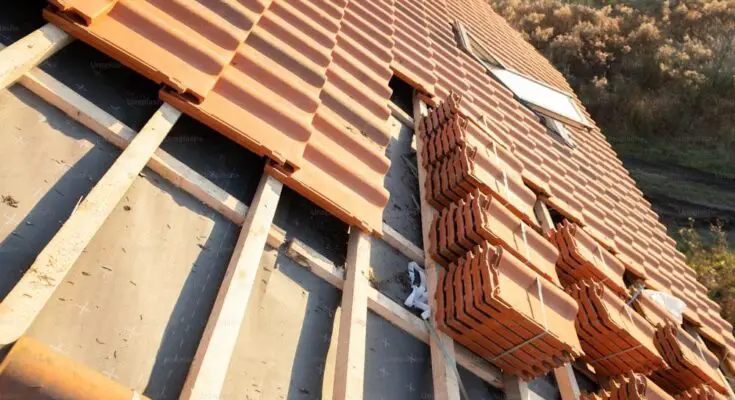When you look at a house, the roof is one of the first things you notice, but it’s not just about curb appeal. Your roof is your home’s first line of defense against the whims of the weather, especially in a place like Avon, Indiana, where the seasons bring their own set of challenges. From the snowy blankets of winter to the sun-drenched days of summer, Avon’s climate demands that homeowners pay careful attention to their roofing choices.
Selecting the right roofing materials is about marrying form and function, ensuring your home not only looks inviting but is also well-protected against the elements. It’s a decision that affects not just the immediate comfort of your living space but also the long-term value and sustainability of your property. In Avon, where the community prides itself on beautiful homes and well-kept neighborhoods, getting your roofing right is a nod to both practicality and pride in homeownership.
Whether you’re building a new home or considering a roof replacement, understanding the nuances of different roofing materials can be a game-changer. It’s not just about picking tiles or shingles; it’s about making an informed choice that suits Avon’s unique climate while aligning with your personal style and budget.
Let’s dive into the key considerations that will guide you in selecting the best roofing material for your Avon home, ensuring it stands strong and looks great, season after season.
1. Consult with Experts
When it comes to choosing weather-resilient roofing materials, the advice of professionals is invaluable. In Avon Roof Replacement experts at Storm Warrior Roofing & Restoration are well-versed in addressing the local climate’s demands, offering tailored solutions that ensure your home remains secure and stylish through every season.
They can provide personalized recommendations based on your home’s location, design, and specific needs. Consulting with experts ensures you get insights into the latest materials and technologies in roofing that you might not find through simple online research or by walking into a hardware store. These professionals can also help you understand the longevity, maintenance, and cost-effectiveness of different roofing options, enabling you to make an informed decision that goes beyond just the initial price tag.
2. Understand Your Climate
Your local climate is a crucial factor in choosing the right roofing material. Whether you live in an area prone to heavy snowfall, intense sun, or high winds, the material you select must withstand these conditions effectively. For instance, in areas with heavy snow, a sloped roof with slippery material can help prevent snow accumulation, while in hot climates, a reflective roofing material can reduce cooling costs. Conduct research or consult with local experts to identify the typical weather patterns in your region and understand which materials are best suited to withstand those conditions.
3. Material Durability
Durability is key when selecting roofing materials that can endure harsh weather. Materials like metal, slate, and asphalt shingles each have their own set of benefits and challenges in terms of weather resistance. Metal roofing, for example, is known for its durability against wind and precipitation but can be prone to denting. Slate offers a long lifespan and good fire resistance but is heavy and requires a sturdy structural support system. Asphalt shingles are popular for their cost-effectiveness and decent performance in various climates, though they may not last as long as some other materials. When choosing, consider not only the material’s resistance to weather but also its expected lifespan and any maintenance needs that might arise over time.
4. Energy Efficiency
Selecting roofing materials that contribute to your home’s energy efficiency can lead to significant savings on heating and cooling costs. Materials that reflect sunlight, such as cool roofing options, can keep your home cooler in hot weather, reducing air conditioning needs. In cooler climates, choosing materials with good insulation properties can help retain heat within your home, lowering heating costs. Energy-efficient roofing materials not only provide cost savings but also contribute to reducing your home’s environmental footprint. When shopping for roofing, look for materials with good energy performance ratings and consider how they will work in conjunction with your home’s overall insulation and energy management system.
5. Weight Matters
The weight of roofing materials can have a significant impact on your home’s structure. Heavy materials like slate or clay tiles may require additional structural support, which can increase the complexity and cost of the roofing project. On the other hand, lighter materials such as metal or certain types of synthetic roofing can provide durability without the need for extra structural enhancements. It’s important to consider the weight of the material and ensure your home’s structure can support it without requiring costly modifications. Consulting with a structural engineer or a knowledgeable roofing contractor can provide clarity on what your home can safely accommodate.
6. Maintenance Requirements
Choosing a roofing material isn’t just about the installation; it’s also about the future. Different materials require varying levels of maintenance to ensure their longevity and performance. For example, metal roofing might need occasional resealing to prevent rust, while asphalt shingles may require regular inspections to replace damaged or lost shingles. Understanding these maintenance needs upfront can help you select a material that fits your willingness and ability to perform ongoing care. This foresight can prevent unexpected costs and extend the life of your roof, ensuring it remains weather-resilient for years to come.
7. Aesthetic Appeal
While the primary focus is on resilience and functionality, the aesthetic aspect of roofing materials should not be overlooked. The right material can complement your home’s overall design and increase curb appeal, potentially boosting property value. Whether you prefer the modern look of metal, the classic appearance of slate, or the traditional feel of asphalt shingles, choose a material that aligns with your home’s architectural style. Additionally, consider the color and texture options available, as these can also impact the visual appeal and even the heat absorption of your roof.
8. Cost Considerations
Budgeting is crucial when selecting roofing materials. While it’s tempting to opt for the least expensive option, it’s important to consider the long-term costs associated with maintenance, energy efficiency, and replacement. Sometimes, investing more initially can lead to lower overall costs due to the material’s durability and energy-saving properties. Assess the lifecycle cost of each material, not just the upfront expense, to make an informed decision that balances cost with benefits.
Conclusion
Choosing the right weather-resilient roofing material for your home is a multifaceted decision that impacts not only the immediate aesthetics and functionality of your home but also its long-term value and maintenance needs. By considering expert advice, climate compatibility, material durability, energy efficiency, weight, maintenance requirements, aesthetic appeal, cost, installation complexity, and warranty terms, you can make an informed decision that ensures your home’s roof is not only beautiful but also durable and cost-effective. Remember, a well-thought-out choice now can save you time, money, and hassle in the future, ensuring your home remains safe and comfortable regardless of the weather outside.



